Three Ways of Knowing Failure
by: Anna Hickey-Moody , May 15, 2019
by: Anna Hickey-Moody , May 15, 2019
‘[M]ethods need to be open, multiple, uncertain, and also affective or playful, because of the nature of the social world itself’ (Coleman 2017: 141).
‘ [W]hile failure certainly comes accompanied by a host of negative affects, such as disappointment, disillusionment, and despair, it also provides the opportunity to use these negative affects to poke holes in the toxic positivity of contemporary life’ (Halberstam 2011: 3).
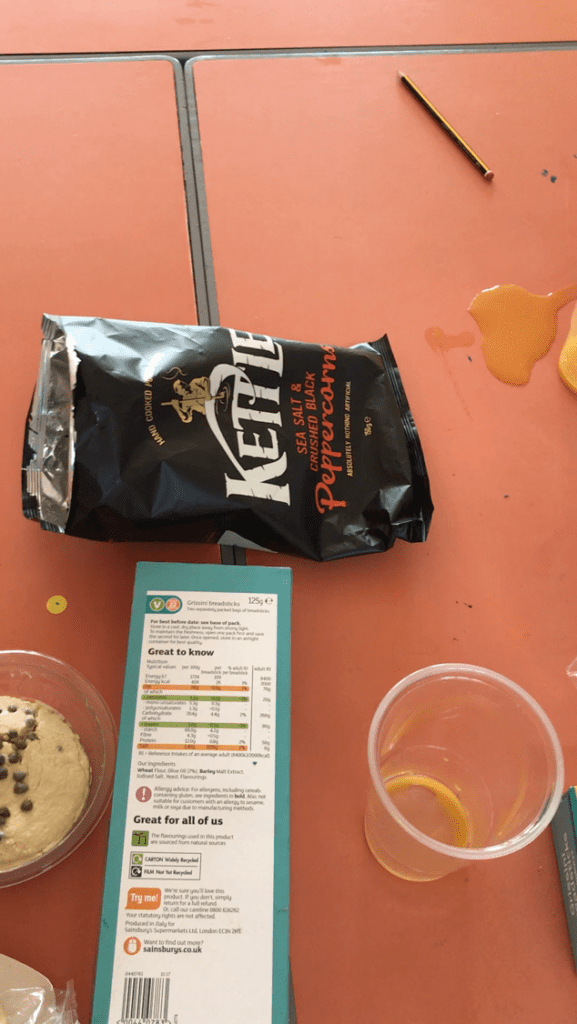
Fig. 1. Accidental chip pocket photograph

Fig. 2 Accidental selfie of researcher in situ
Two Ways of Knowing Failure
This paper brings together two different ways of knowing failure, with a view to offering epistemological, methodological and ontological resources for undertaking feminist research. The idea behind ‘two ways of knowing failure’ is to make a point about the kinds of knowledge, data, and methods that are legitimate and valued in the research assemblage, while showing how a feminist ethnographic position can leave one vulnerable to feeling your whole person is a failure if parts of one’s research do not work. On face value, readers could be excused for thinking this research experience really does not matter: who cares if I feel like a failure? Especially when all the experiences of failure end up creating a portfolio of successful ethnographic work?
I maintain that recognition of the complexity of the research assemblage and the gendered nature of the research assemblage does matter in terms of supporting the work of emerging feminist ethnographers, who surely have similar experiences of feeling like a failure, experiences that are not necessarily echoed in the existing literature on methods and failure. Another way of saying this is that I am going on record talking about research failure so that women who fail in aspects of ethnographic research methods can understand their failure as normal, as something others have experienced, and perhaps as a step to success. Failure and success are enmeshed, although experiences of failure do not make this clear. Through putting academic and esteemed ‘theories of failure’ alongside first person, methodological experiences of failure in fieldwork, I mean to suggest that it is popularly seen as acceptable within social research assemblages to write about the political significance of failure (see, for example, Halberstam 2011), but not to actually do fieldwork that fails. Doing fieldwork that fails is somehow taboo, despite the gains made towards appreciating the political significance of failure in queer and disability theory.
While this paper is about methodological failure, it arises from a broader project working with responsive ethnography to explore the common ground between people of different faith backgrounds. The substantive content of my research project on religion is not taken as the focus of this paper, as I am arguing that methodologically, ethnographic work blends one’s experience of fieldwork with one’s sense of self and that this presents particular challenges and vulnerabilities for feminist researchers. In being and becoming a responsive ethnographer, one cannot always plan research: one must often relinquish control. Not being in control often feels like failing. The experience of being a woman researcher, and an outsider trying to belong to a culture that is not one’s own, can also at times feel like failure. Being brave enough to experience failure, then, is perhaps a pre-requisite for undertaking feminist ethnographic research. In developing a feminist ethnographic perspective, on running a trans-national empirical research project, I have come to appreciate the epistemological resources that feminist literature on failure provide for those of us who agree with critiques suggesting happiness and mindfulness can be neoliberal technologies; but more than this, I’ve had to live with feeling like a failure while assessing data sets that contain moments of failure that are often methodologically significant and aesthetically interesting. The project on faith, belonging, community and identity about which I write is a very successful project, in the respect that the research methods broadly work well and I am obtaining rich data as well as impacting the communities in which I work. Sometimes I believe the methods I have invented will outlive me as a person. I explain these methods in other publications (Hickey-Moody 2017 & 2018; Hickey-Moody & Harrison 2018) and give a little more detail in what is to follow, but this paper is not about what I see as being ‘successful’ about the way they work. This paper is an expression of my desire to speak to the magnitude of my experience of the utility of accident, the labour of gender, utility of vulnerability and the significance of responsivity.
I have a vision of perfect data I don’t know that I have, I don’t realize this vision shapes my research, until I look back over data and there is me chewing the end of the sandwich, staring at the camera that I have just got working, saying ‘oh yeah, that seems to be working’. Or when I look back over the photos of fieldwork taken by a young research participant and all I can see is my bottom, going on for what looks like miles. When I work with a group that I can’t get to engage. When the camera turns itself off after 30 mins. If I make a list, the list of what is ‘working’ is so much longer and also more significant than the list of errors. What is interesting to me is how big the very small errors seem and how preoccupied I become with data that is wasted, not good enough, inaccuracies in transcripts, the wrong kind of catering. Is the tertiary education sector filled with successful professors travelling around filled with anxiety about data waste, technological errors and storage? I am beginning to assume so. As the literature reviewed below demonstrates, I am clearly not alone in thinking about what failure produces, although when thinking and speaking ethnographically one is called to negotiate the imperative to put an I in failure. One fails as well as thinks about the significance of failure. Indeed, while writing this article I have come to see failure as core in my ethnographic assemblage and have learnt to value the kinds of labour associated with failure. Here, I argue that:
- failure is a research method
- scholarly approaches to failure help us understand the political and epistemological significance of failure, although they also ‘feminise’ and hide the act of doing empirical research, thus adding to the labour associated with empirical fieldwork.
- living with the experience of failure is part of being a woman and is maximised being a woman ethnographer.
Women are consistently positioned as failing to achieve their gender successfully and this experience of failure is echoed in the research assemblage through concerns about developing a strong data set, discussions of strong and weak data, and rhetoric recounting successful analysis. I am consciously attempting to speak back to these ways of valuing research and keep the two discussions of knowledge forms different because empirical research assemblages call researchers to inhabit radically different worlds. To read on failure is not to experience failure and there is not necessarily a smooth connection in the middle of the two forms of knowledge.
The first section of this paper is a ‘position piece’ on failure as method, in which I offer an exposition of the uses of failure in ethnographic research. The second part of the essay is a literature review of contemporary work on failure and speculation as method, which is positioned as a resource for thinking about the utility of failure, yet also shows us how little existing research on empirical research and failure exists. This also makes clear some of the weight associated with spectres of failure in empirical work. Taken together, these different perspectives show us that failure in empirical research is able to be re-thought as generative.
Manifesto on Failure as Method
The fact that ethnography as a form of empirical research does not include much discussion of the emotional, psychic and physical toll of living and working abroad is striking. I live away from my home for over the half the calendar year, renting flats or rooms in houses, or hotel rooms, in the areas I am researching. I get to know the people in the local shops and develop a sense of the area: I do the ethnographic being-in-place that gives a sense of how things work. However, I am a traditional insider-outsider. Yes, the local Tesco till-lady knows me, but I also have suitcases of data and cold weather clothes and books I can’t carry around in storage in London, or in an art studio in Manchester, or in a box in my research assistant’s attic in Sydney: the list could go on. I am a materially and psychically distributed human being trying to maintain a connected sense of self in a transnational research assemblage that relies on my labour.


Fig. 3a & 3b Photo of combined butchers and opportunity shop in a fieldwork site. These photos give a sense of the aesthetics of the communities in which I work.
This emotional labour, the magnification of feelings of failure that can accompany it, surely must sit alongside other similar feelings and experiences of ethnographers. The experience of doing empirical research shapes how we feel about ourselves. As such, it is worth taking seriously. Ethnography as a field needs to understand the embodied and psychic labours of being open to change, being responsive, being overcommitted, giving one’s domestic world over to work. These are things that can make for a good empirical researcher. As can an interest in following the leads thrown up by fieldwork, being aware of multiple stories, negotiating what different forms ‘success’ might take. These strengths come with weaknesses. I want to discuss these so that women who give their lives to their fieldwork and have moments of struggle can draw on my archive of experience. Sometimes success feels like failure.
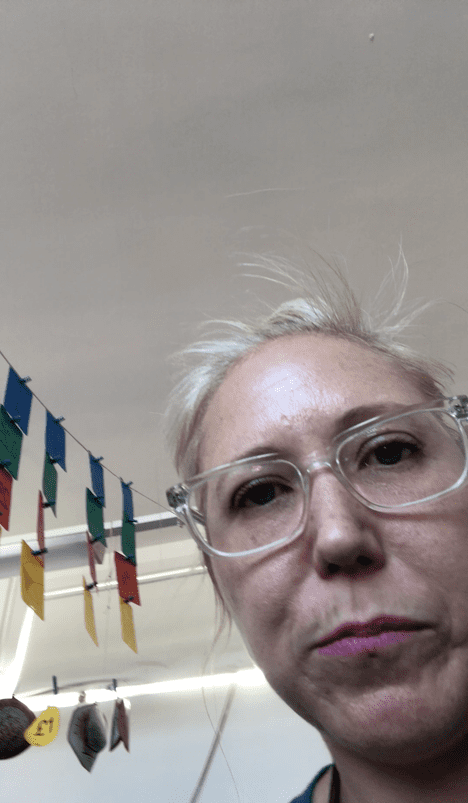
Fig. 4 Chewing: One of many accidental recorded images of the ethnographer in the field.
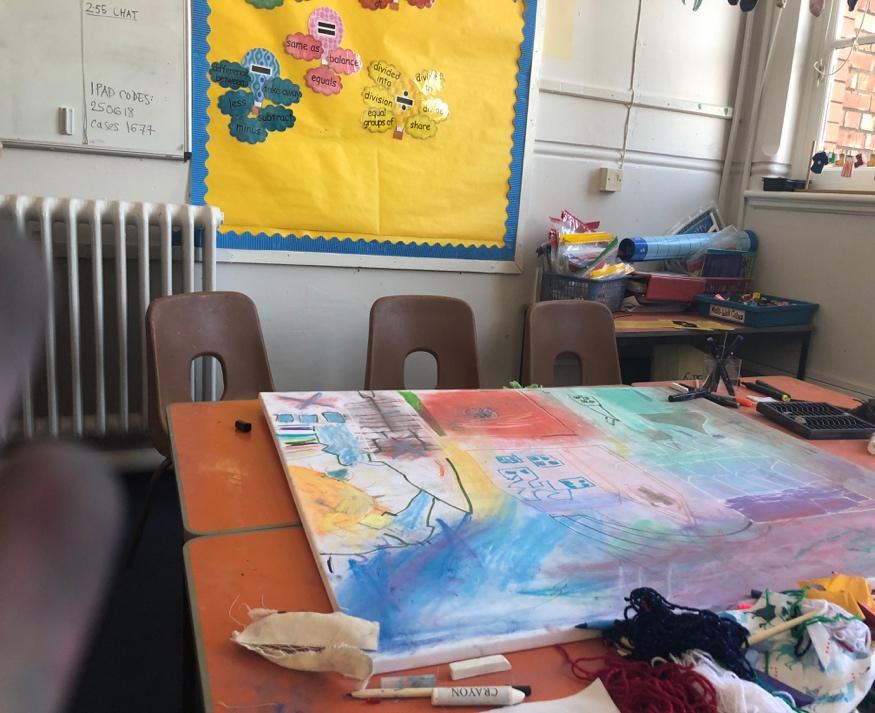
Fig. 5 Fingers next to Canvas: the mess of data collection with my fingers cutting into the left-hand side of the image.
The research stories I usually tell are never the stories about what it feels like to undertake research. I usually tell ‘proper’ or legitimate research stories about things I think are more important than feelings, namely, things my research subjects have said and done, and I call these the ‘core themes arising from data’. These include insightful comments that research participants have made, and also ‘big picture’ stories about the demographics of the communities with whom I am working. Despite my genuine and conscious belief that matter and meaning are co-constituted and entangled, I unconsciously think the experience of me DOING research is somehow incidental. I maintain that my focus on understanding how the social is choreographed is a good thing. However, such a focus relies on a particular kind of silence. This is, the silencing of the experience of the researcher in the process of fieldwork. And, really, why would we tell the story of our experience? We do fieldwork to discover other people’s experiences, to understand the logic of the field, to learn, to map worlds. Not to know ourselves. We could know ourselves from the comfort of our work office or our lounge room could we not? Or could we? Would we be the same selves? New materialist theory (Barad 2007 & 2016; van der Tuin 2015; Palmer 2016) suggests that we would not be the same selves outside the field and that through the entanglement of our research site and ourselves we change and the subjects of our research change as well. The process of being together re-makes us.
A philosophy of intra-action also, then, presupposes that the ‘real’ or ‘strong’ data generated and collected through fieldwork is co-created by what I will characterise as the ‘waste’ in the fieldwork assemblage. ‘Strong’ and ‘weak’ data go hand in hand. Weak data, or waste data, includes a broad gamut of things and residues, such as parts of focus group recordings that are not good enough to be transcribed, the uneaten food at the end of a focus group, the videos of a room taken on slightly the wrong angle (so they miss some of the human research participants), and the embodied experiences of the researcher as the human sponge who mops up the affective and material waste of the research process.
In the middle of a trans-national, multi-method empirical, qualitative and quantitative project there will always be multiple failures or even just awkward moments that feel like failures. My project is comprised of 14 sites, six cities and literally hundreds of children and parents. There are so many variables that it is impossible to accurately predict what might happen. The ethnographic work is in watching what happens. However, when things go wrong, it is often something I could have prevented. Not always, but often. These experiences stick to me like little burs. They are feelings and experiences that fill my head. My head is supposed to be filled with the experiences of children and communities with whom I am working. With stories of migration journeys and their social values. Like an anorexic obsessing about calories, I travel the world with bags of high-tech recording equipment, worrying that I can’t always use it well enough. And I wonder: doesn’t anyone else feel like this? Don’t other people worry obsessively about the sound quality of their focus groups? Don’t other people forget the camera charger and use an iPad some days? Why do we not ever read these stories from the field?
I am sure these stories do indeed exist, but they are part of waste data that is thrown away. The effect of ‘telling research stories about good data only’ is partly to position the researcher as waste. The researcher is what is needed to get the data, but our experience of getting the data, in all its complexity, is not. We are part of the research assemblage and yet the research assemblages’ affects on us are not popularly seen as constituting ethnographic data. With a view to validating and informing the significance of this work, I decided to write about experiences of failure in the research assemblage. Without my failure and the labour of being with the feeling of failure, I would not have the ‘data’ of community stories, children’s perspectives and artworks. These multiple data sources are accessed through my capacity to live with the feeling of failure and they express complex stories about religion, identity, place belonging, migration and social values. They also rely on me to choreograph the situation in which they unfold or materialise. The data in part relies on a little of my failure, and much more of my success.
Like many women, I don’t notice my success in the same way as I feel failures. The success goes without saying, it is the data I am here to collect. It is the things that I think I am paid to do. The things I work so hard for. But falling down the edges, stuck in the sides of the psychological couch of the mind, are the secret things on which my success relies. These ‘secret things’, the things I feel ashamed of, include:
- The moment when, after waiting in a school staffroom for two hours with no Wi-Fi and no offer of water, or a cup of tea, for a meeting with a school community liaison that kept being pushed back, I said ‘I am a Professor. People usually care about me’. This statement about my own importance came as rather a shock. I felt ashamed that I articulated my relative privilege so brashly, yet I was also intensely irritated by the fact that presenting as a friendly woman signified to many staff in the school community that I would not have a lot of responsibility, there are not multiple demands on my time, and the assumption followed that I could wait in a staffroom for over two hours.
- The moment when a teacher complained that three people had emailed her and could I not just do it myself and be more organised about it, so she only had to deal with me, and I said: ‘I have over 4 thousand unread emails. I pay three people 60 dollars an hour each to respond to emails for me. It’s just not going to happen’. Again, the shame of my privilege was mixed with the frustration that, while I devote a lot of myself to the field, ‘the field’, or individuals in the field, cannot imagine who I am outside fieldwork. I am just human glue sticking things together for those involved in the fieldwork.
- The time when I sat on the side of a very hot western Sydney road and cried because I had been told by a Christian Minister’s secretary that I am going to hell for the sin of believing that all religions are equal.
- The moment when an Anglican pastor ushered me back out the front of his church as if I had a contagious disease. And closed the door.
- When, after carrying three suitcases to Manchester for fieldwork I discover that I have left the voice recorders in London, along with the camera battery charger. I do, however, have an awful lot of crepe paper, drawing utensils, paint, paper, fabric, a camera, a tripod stand, iPads. And clothes for the week.
These moments are some examples of the burs I described that stick to me, and about which I feel shame. They are secrets I carry with me into the field.
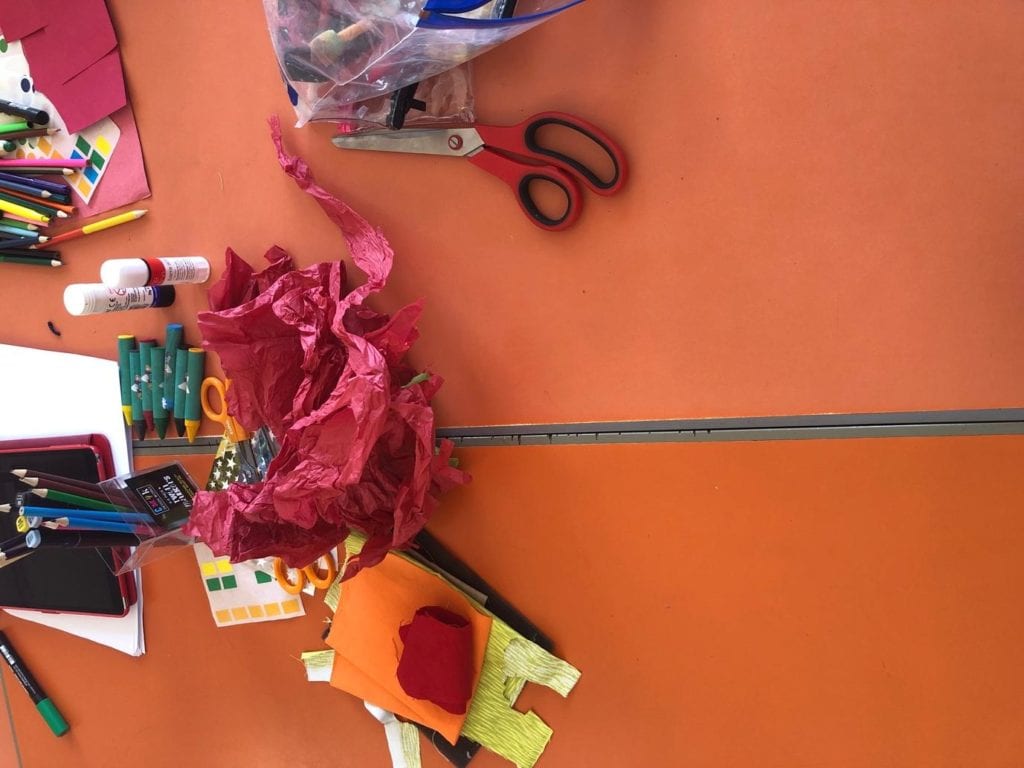
Fig. 6 Table with materials shows the everyday mess of fieldwork
Failure produces unconventional data. Failure also produces a reliance on memory, on field notes, on the human-ness that ties people together when they share failures, such as my 4 thousand unread emails. Indeed, we need to ask what actually constitutes failure and can that matter as part of the research-assemblage? This is a question that has come to sit in my mind more and more, as I spend my weeks recording, making and talking, or recording and organising, making and talking, with varying levels of success (and failure). A growing part of me thinks this all matters as data: the occasional school culture of neglect, the art teacher’s anxieties. The pastor’s distaste. My human affection, warmth, engagement and error. These accidents are as present to me as the things I am consciously looking for, such as the young girl who says ‘caring and sharing matter and they come from the heart’, as the parent who says they are scared to raise their child as Muslim because of hate crimes, as the tangible sense of distress or of engagement that one might have when entering a research site, depending on institutional culture.
I am the body, the transversal line, that stitches these disparate moments together. And for those who forget the voice recorder, who can’t work the new camera, who tell the grumpy primary school teacher to grow up a tad, I want to write the story of some things that escape me in the research assemblage. The things that get away, fall between the cracks, are forgotten, deleted, thrown out, wiped over, erased, corrupted, and all the other things that happen to the various forms of research waste we produce.
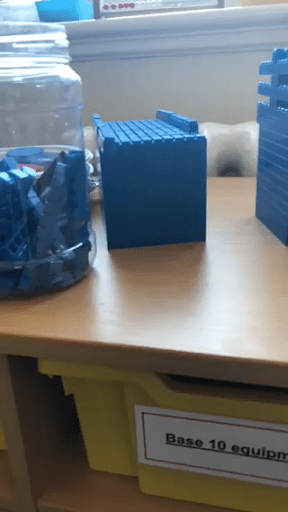

Fig. 7 Building Blocks & Fig. 7.1 Building and Making. These photos were taken by a child playing with an iPad during fieldwork and are a small part of a much larger set of images taken by the child that could be constructed as ‘waste data’.
Theories on the significance of failure and speculation
In what follows I combine discussions of research on failure and speculation, as, while speculation is more future-oriented than work on failure, they are both bodies of work about possibility–missed possibilities, possible possibilities, chances and contingencies. As I note at the beginning of the chapter, for the most part, these bodies of literature do not engage with empirical experiences of ethnographic fieldwork.
While I make an effort to look beyond the now canonical Queer Art of Failure (Halberstam 2011), I feel that any discussion of scholarship and failure should begin with an acknowledgement of Halberstam’s contribution to the field and the work of others who draw on The Queer Art of Failure, and as such, I begin with my own consideration of Halberstam’s writing. Writing from a feminist, new materialist standpoint, I also want to consider what feminist new materialism has to offer theories of failure, in terms of maximising the ways in which failure can be understood as dynamic and generative. Halberstam introduces The Queer Art of Failure by calling for a reconfiguration of capitalist heteronormative logics of ‘success’ and ‘failure’, using ‘low theory’ to draw examples from popular culture, avant-garde performance, and political manifestos. Queer experience is used as an exemplar of living a life of failure. Despite occasional negative affects, queer experience offers an often anarchic approach to life that shows up flaws in ‘normative’ thinking. Halberstam sees the ‘cult of positive thinking’ as one of the organising principles of inequitable capitalism and argues that a disruption of the success/failure binary is a way to break out of the mindset of the cult of positive thinking. A new materialist framework would suggest that success and failure are intricately enmeshed: one is co-constitutive of the other. A new materialist framework effectively dissolves a failure/success binary as the constitution of failure relies on the co-constitution of success. Failure, as I have shown, also creates unexpected successes. Along with generating a renewed interest in failure, Halberstam challenges the notion of being ‘taken seriously’ and champions the ‘stroll down uncharted’ streets, a stroll that allows for new knowledges and resists modes of knowledge production narrowly defined by the academy. Halberstam argues for illegible knowledges that ‘see unlike a state’ and challenge the modes of visibility and systems of classification upon which the state relies. Halberstam positions the ‘subjugated knowledges’ that Foucault championed as a form of ‘failure and stupidity’. Showing us some uses of failure and stupidity, Halberstam calls us to:
1) resist mastery—proposing conversation (particularly in ethnography) over the disciplinary mode of ‘mastery’;
2) privilege the naive or nonsensical—this allows for alternative pathways to knowledge and acknowledges there may be learning without teaching in the strictest sense;
3) suspect memorialization—challenging the act of memorialising as creating a tidy and regimented history, forgetting and erasure has a power to dismantle grand logics and to revive lost genealogies (2011: 11- 15).
Halberstam argues that low theory is a counterhegemonic form of intellectual activity, occurring outside the demarcated spaces of both academy and hegemony. Across queer readings of childhood and hegemonic masculinity, Halberstam shows that failure is an inbuilt and necessary component of capitalism and goes on to state that her history is a history of anti-capitalist, anticolonial queer struggle and silence. Failure is formulated as an act of resistance that does not rely on utopianism but rather finds the existing alternative within the hegemonic. Working off of Edelman’s No Future (2004), Halberstam discusses queerness as relegated to negativity and anti-production and compares this to the supposedly ‘hetero’ ideal of reproduction, arguing that queerness should embrace negativity and stand against ‘heterosexual optimism’.
Halberstam critiques Edelman for disengagement with the real political stakes that this anti-futurism forecloses. In formulating an alternative to this particularly anti-social gay male archive, they position a broader, queer antisocialism that counters camp male rage with a more chaotic ‘dyke rage’. In formulating the radical queer future Halberstam turns to the ‘queer fairytale’ as exemplified by Shrek and Finding Nemo where the other body cannot merely learn to accept themselves for who they are but, instead, clumsily forges an alternative to the tyranny of normalcy. Halberstam explains that: ‘This is a story of art without markets, drama without a script, narrative without progress. The queer art of failure turns on the impossible, the improbable, the unlikely, and the unremarkable. It quietly loses, and in losing it imagines other goals for life, for love, for art, and for being’ (Halberstam 2011: 88).
Halberstam discusses gender, AIDS, animation, consistently finding cracks where the light gets in across these heterogeneous subjects. Halberstam’s work on the significance of failure has been hugely influential. For example, Mitchell, Snyder and Wares’ piece ‘“[Every] Child Left Behind”: Curricular Cripistemologies and the Crip/Queer Art of Failure’ (2014) suggests that alternative insights and knowledges of disabled students can be utilised as an alternative to normalisation/assimilation. This is contrasted with various neoliberal strategies of acceptance that the authors argue are impossible to achieve, and thus they use the failure to assimilate as a starting point of knowledge. Analysing neoliberal inclusionary policies as failing to assimilate most disabled students (and also criticising the goal of assimilation itself) the authors propose every child left behind, a playful inversion of George Bush’s No Child Left Behind policy (2001), drawing on Halberstam to find productive insights learned from failure to assimilate and normalise. In practice, this every child left behind approach would use a crip-queer lens to analyse texts that are already popular within the classroom with a view to better understanding and drawing out the knowledges and histories of non-normative bodies. For crip/queer students this process legitimises their knowledges and foregrounds core parts of their experiences, which are no longer hidden when interacting with the class. Pedagogical interventions are evaluated favourably by the authors when compared to technological interventions often deployed in ‘inclusive’ initiatives. Not only does the focus on technology fail to accommodate for so many, but it also lacks the reflexive potential for disabled students to shape their own education, as well as often being an excuse for ableist policies that cite cost as a barrier. Mitchell, Snyder and Wares’ suggest that ‘Curricular cripistemologies involve the development of teaching pedagogies that deviate from core teachings by foregrounding crip/queer content as fortunate failure. This pedagogical ‘incoherence’ offers important social options for [the construction of] alternative ethical frameworks for living’ (2014: 297). There is significant potential for a new materialist reading of this foregrounding of crip/queer content, as there are aspects of the crippled, queer, unexpected, in everything. These are co-produced along with ideas and practices of ‘ability’, ‘straightness’, and intentionality. A new materialist perspective on enmeshment shows up the inter-relationships between queer and straight, abled and crippled, intention and accident, and so on.
Merri Lisa Johnson’s 2014 piece ‘Bad Romance: A Crip Feminist Critique of Queer Failure’ offers a slightly more critical perspective on Halberstam’s work on failure. Johnson critiques Jack Halberstam’s concept of queer failure through what she calls a feminist ‘cripistemological’ lens. The article begins by acknowledging the recent connection between queer theory and disability studies but categorises this relationship a one-way ‘bad romance’ in which crip theory’s turn towards queer theory is met by silence and an unwillingness to reciprocate. Halberstam is positioned as one of the biggest examples of non-responsiveness to crip theory; her work draws heavily on what could be considered disabled experience but refuses to acknowledge the disabled subject directly. Through a new materialist lens, configurations of queer that exclude disability must be read as co-constitutive of asexual, or desexualised ideas of disability. Halberstam’s ‘antisocial turn’ is seen as being non-productive for the disabled subject, already precariously positioned in social contexts. Yet, this same ‘antisocial turn’ generates the imagined construction of a disabled subject that is without sex. As generative as Halberstam’s work is, Johnson shows us that negativity has its limits. The imagining of the asexual disabled body can be considered as one of these limits. Perhaps failure needs to be regarded sympathetically, analytically and experientially, rather than with celebration, as celebrating failure could quickly become the other half of the ‘cult of positive thinking’. In this instance, celebrating queer failure has created a sex-less disabled subject, which is fictitious and also incredibly problematic. However, I wonder if sympathy for failure has utility. Sympathy, an empathic concern is driven by a switch in viewpoint, from a personal perspective to the perspective of another group or individual. Rather than re-making the other through affirming difference, one becomes with the other. Becoming with failure is perhaps a slightly gentler way of engaging with what failure produces while understanding the obligation, rationale or even perhaps utility enmeshed in ideals or goals. For example, passing school is an important part of most children’s lives. Failure to pass school can often show us classed, racialised and ableist aspects of schools. This does not make the goal of passing school part of a ‘cult of positive thinking’ but it does mean we need to learn systemically, experientially, philosophically and methodologically from failure.
The methodological orientation with which I write is perhaps most closely matched by Gill and Temple’s 2014 paper ‘Walking the fine line between fieldwork success and failure: Advice for new ethnographers’. The authors offer an initial discussion of a point I have made above, noting that while ‘the importance of ethnographic research in developing new knowledge is widely recognised, there remains minimal detailed description and discussion of the actual practice and processes involved in completing ethnographic fieldwork’ (2014: 1). An acknowledgement of the constitutive inter-relationship between success and failure needs to be part of the way in which we think about empirical research design and practice. A beginning point for this can be found in Peter Gill’s discussion of his own experiences with ethnography. Gill outlines his PhD project on rural male identity, simultaneously classifying it as a failure. In his ‘failed’ ethnography, Gill visited his research community and stayed with a local butcher, quickly realising that he could not integrate himself properly with a community that values privacy and loyalty. After returning home he rethought how his methodology will work, speculating the project will require deception, further integration and better financial support. On the advice of his supervisor (I have to agree that deception is rarely a good idea), Gill changed his site of fieldwork and wrote off the initial site as a failure. Yet, arguably Gill learnt quite a lot about the importance of loyalty and the ways in which loyalty is performed in the community in which he undertook his initial research, and also learnt a lot about the limits of ethnography as method. These are insights and knowledges generated by experiences of failure.
Gill shifted his site to a suburban gym that he was already frequenting. His gym counted numerous working-class men as its members. Initially, the friendships he developed became strained when he attempted to bring up interviews too quickly. Instead, he dropped the subject and casually strengthened the friendships over two years so that the men would instead bring up the subject of interviews themselves and the interviews ended up merely mirroring the everyday conversations Gill was already engaging in. The article concludes with a summary of the issues inherent in the projects and advice for postgraduate students. The authors note that the failed project was helpful in its own way, as publishing reflections on the field notes for the rural visit drew attention to, and underscored, issues within rural communities. They wryly note that: ‘While the intrapersonal combination of excitement, thirst for knowledge, and commitment will take you a long way, it will not take you everywhere’ (2014: 10) and ‘propose that the messy [research] cases be given as much space as the neat ones, as it is these messy cases that provide the grist for contemplation and substantiation of our knowledge development.’ (2014: 13) This philosophy echoes the earlier work of John Law’s After Method: Mess in Social Science Research (2004). This book changed a lot in how I thought about empirical fieldwork and also changed the stories I let myself tell from fieldwork. Law reminds us that: ‘the world is … textured in quite different ways … academic methods of inquiry don’t really catch these … parts of the world are caught in our ethnographies, our histories and our statistics. But other parts are not, or if they are this is because they have been distorted into clarity (2004: 2). Such a distortion into clarity invents clarity as much as it subjugates mess. Mess is not just generative, it is inherently creative.
In ‘Falling Short’, Chapter 4 of his polemical book Knowledge, Creativity and Failure. A New Pedagogical Framework for Creative Arts, Chris Hay (2016) explores what might happen if teachers embrace a pedagogy of failure. Hay argues that allowing students to learn through failure may represent a new way forward for creative arts pedagogy and turns towards numerous theories on failure—including Halberstam’s work on the Queer Art of Failure–to examine how failure can be considered through an affective framework. Hay looks at failure’s role in reinserting the personal back into pedagogy and considers how failure can move us away from a results-oriented teaching. One of the major hurdles faced by those who want to overcome what we might call the ‘cult of positive thinking’ that is what results-oriented teaching has become, is the evangelistic praise of contemporary pedagogies’ instrumentalization, through which failure is literally made synonymous with a supposed lack of success in teaching and learning, poor student reviews’ of teachers and low grades. Working in support of failure requires a complete rethinking of teaching discourses. Good pedagogy is more than ticking boxes.
Hay then discusses his own experience heading National Institute of Dramatic Arts’ new collaborative learning units that sought to teach collaborative process in a somewhat less hierarchical structure of teaching and learning. The problem emerged of rewarding students who are learning through the desired process of the unit when that learning resembles failure under existing assessment criteria. Some solutions put forth included a mandatory piece of reflective writing that discussed failure, the requirement to include a discarded idea in final presentations and a workshop at the beginning of the subject that discussed ideas of failure. At the time of writing many of these additions had not been fully implemented but anecdotal evidence of early implementation was positive.
Drawing on the work of Carr, Burger, McKinnon & Lowry (2016: 87-89 & 93) Hay notes that a pedagogy of failure must not just integrate failure but needs to remake the grammar of teaching entirely. The agreed-upon first step for many scholars is the abandonment of a product-based pedagogy and many scholars suggest that process pedagogy alleviates this. However, Hay sides with Carr, who sees process pedagogy as merely slowing down the focus on product and furthermore process itself becomes a product. Citing mathematics teacher Edward Burger’s practice of having students share their mistakes and grade their own ‘quality of failure’, Hay synthesises Carr, Burger and his own practice to devise a checklist of a pedagogy of failure:
- An invitation to think through failure
- Multi-directionality and multi-vocality
- An assessment of failure’s contribution
- A formal recognition and encouragement to fail
Hay also discusses some smaller-scale solutions to current curriculums. Looking at the NSW drama curriculum, Hay explores how drama essays that use workshop experiences in their writing could be encouraged to draw on experiences of failure and thus legitimise knowledges produced by failure within existing systems. Hay values theorists of failure because:
They all move beyond failure as a sign that a performance has not gone as intended, and instead consider it as an aesthetic strategy in its own right. Significantly, each of them also consider failure to be a politically resistant act, Ridout most overtly: their central argument is that failure promotes a different way of doing things, and in particular that it allows for ordinary logics (be they of neo-liberal capital, or audience-performer relationship) to be disrupted and radically redrawn. Failure can thus offer performance something more (2016: 76).
A key contribution that Hay is proposing ‘is that failure can be understood as a way of knowing, and is constitutive of knowledge in its own right, rather than as a mere stepping-stone on the way to a clean, bright success’ (2016: 77). I agree that failure is epistemologically specific and valuable because it is epistemologically specific. More than this, I think there is a point about disciplinarity to be made here. The performing arts and queer theory have come to value failure in ways from which the fields of sociology and ethnography can learn. Another example of the discipline of performance studies embracing generative relationships between failure and can be found in O’Gorman and Werry’s (2012) themed edition of Performance Research ‘On Failure (On Pedagogy)’.
In their editorial introduction, O’Gorman and Werry (2012) begin by distinguishing between the neoliberal obsession with failure as a pathway to innovation/disruption, and queer theory/ art theories’ use of the word. The article acknowledges that failure cannot be merely valorised; that embodied, visceral and tactile experiences of failure hurt and are highly affective and painful. O’Gorman and Werry seek to explore performance pedagogy not in terms of teaching performance but in performance as a teaching discourse. They are interested in how the failure to champion progressive ideals itself may be productive. They do not really resolve this question, but they do acknowledge the almost absurd balancing act that live performance, so intrinsically bound up in failure, undertakes when it comes up against a normative opponent. O’Gorman and Werry remind their readers that ‘We cannot afford to forget–although we often conveniently do–how mutually dependent are the rarified worlds of experimental performance and the massive apparatus of academe, with its work of publishing, teaching, producing audiences and artists, circulating and valorising artists and their work. How might performance’s evolving understanding and practice of failure intervene in this scene, with which most of us–artists and scholars alike–are entangled? (2012: 2). Further, they ask ‘What would it mean to legitimate the continued practice of public art not in spite of but because of its inevitable failure?’ (2012: 4) and, significantly, suggest that ‘[t]hinking with failure means making affect an object of our curiosity rather than knowledge’s irrelevant remainder. (2012: 5).
Moving from thinking through and with failure to thinking with speculation, in the chapter ‘Developing Speculative Methods to Explore Speculative Shipping: Mail Art, Futurity and Empiricism’, Rebecca Coleman (2017) discusses a ‘failed’ attempt to create what she describes as ‘affirmative speculative shipping’. Coleman begins with an analysis of Amazon’s speculative shipping practice, one aspect of which is a materialist method of advertising in which goods are sent to customers that have a purchasing history which indicates they may wish to purchase the item in question. Being left to decide for themselves once having seen the item, the customer then either keeps (and purchases) the said item or returns it. Coleman draws on the distinction between firmative and affirmative speculation as laid out by the anonymous collective The Uncertain Commons (2013). The Uncertain Commons criticise practices that involve speculative / firmative shipping, because these practices ‘produce … potentialities and then exploit … and thus foreclose … them’ (Uncertain Commons 2013: 27 in Coleman 2017: 133). The Commons offer up ‘affirmative speculation’, whereby the unknowable and unforeseeable potentiality of the future is held onto.
Coleman’s methodology was to create an affirmative speculative shipping practice opposed to Amazon’s firmative practice. In so doing, Coleman sent out 26 handmade postcards, decorated with materials bought from Amazon, and sent them to people based on a deliberately haphazard method of choosing those with the most popular UK surnames living in close proximity to Goldsmiths, the university where Coleman works. Each postcard included instructions on how to return half of the postcard with a response to Coleman’s questions about the future. Of the 26 sent out only one was returned and it had no response. Thus, Coleman classifies the project as a kind of failure, something she recognises as an ever-present possibility in affirmative methodologies that seek to disrupt the knowability of affirmitive speculation. Her suggestions as to what lead to failure are:
- The postcards were unattractive because she is not a visual artist.
- The affective ‘delight’ associated with Amazon packages was not present because people do not associate such delight with handmade objects.
- The selection process was too specific and the residents may have had no, or negative, feelings towards Goldsmiths.
- Unsolicited postcards created feelings of ambivalence or annoyance.
I would also suggest that people are overcommitted and unable to think much about the future. Fear of the future, anxiety about the future can materialise in silence. Coleman concludes that failure is an often-necessary part of affirmative speculative practice and that the project remains in line with Deleuzian empiricism in its desire to provoke and find new conditions of creativity.
In ‘Speculative method and Twitter: Bots, energy and three conceptual characters’, Wilkie, Micheal and Plummer-Fernandez (2014) discuss issues with empirical methods in sociological research, and the constitutive role that the researcher inevitably plays in research assemblages. For those unfamiliar with Deleuzian empiricism, it is a method of thought based in the rejection of all models of transcendental knowledge. Along with rejecting transcendent knowledge, Deleuze focuses on what is created in acts of thinking or making. Wilkie, Micheal and Plummer-Fernandez (2014) use the word empirical to refer to ‘real world’ rather than theoretical research. They go on to suggest that a performative research methodology or ‘speculative devices’ are a useful method for embracing the becoming-with character of social events and propose a speculative method for engaging with the ‘not-as-yet’. They do so through a project whereby bots were placed in the social arena of Twitter to provoke and actively interfere in discussions of energy consumption. The authors go on to note the problems presented by contemporary digital cultures with its obsession with data and the market value of that data; arguing that sociological research must return to novel and speculative methods that do not take this data at face value. This methodology becomes less about answering existing questions then provoking new ones. Such a methodology may involve a nonsensical, random and chaotic event that means to provoke and explore the existing social reality. To create such an event, the research team invented three twitter bots that randomly intervened in twitter conversations in different ways. Wilkie, Michael and Plummer-Fernandez ask their readers ‘How, indeed, do we shift from seeing research as answering a research question to seeing it as the opportunity for asking more inventive questions? (2014: 2) and remind us that ‘There is, therefore, no guarantee that speculative devices and their provocations will work–experiments can and do fail’ (2014: 18). This question of how we might shift from seeing research as answering a question to seeing research as the opportunity for asking more inventive questions is useful for me and aligns with a new materialist philosophy in which ‘agency is cut loose from its traditional humanist orbit. Agency is not aligned with human intentionality or subjectivity. Nor does it merely entail resignification or other specific kinds of moves’ (Barad 2007: 177). What might it mean to hand over agency to a research method? What would a research question generated by methodological work look like? How can methodology ask questions through failure? These are some suggestions for a feminist new materialist uptake of Wilkie, Micheal and Plummer-Fernandez’s work.
I now move the final section of this paper in which I examine experiences of failure in fieldwork and do so in relation to my gendered experiences of failure. An intersectional lens attuned to race, class, gender and culture is the most effective way in which we can see that failure is made by others and by imagined ‘outsides’ that are continually being folded in, as much as by those who experience themselves as having failed. This final part of the article articulates my vulnerabilities very plainly: a practice that may be read as a sign (or multiple signs) of failure. I choose this voice intentionally, to show that the successful researcher I am is co-created by experiences of being a vulnerable woman.
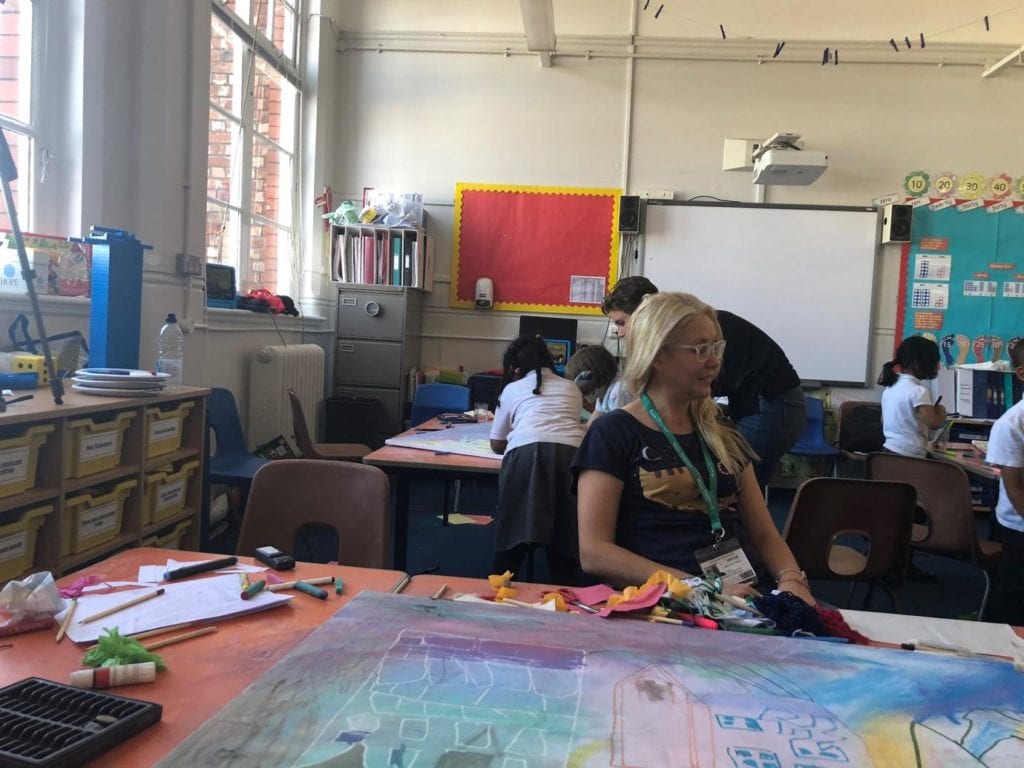
Fig. 8 A moment to breathe
Things that Stay
Field notes 12 June 2018
***** PRIMARY SCHOOL
I have spent £800 on a new video recorder and microphone. I want good quality sound and excellent data capture. I have been sick with anxiety for four days about making it through this batch of fieldwork, I know what I want to do in the school and have the art materials ready, but just being in the school is hard. It is the staff. They really don’t seem to care, and they are so bossy to the students. It seems hard to believe. The school feels angry all the time and I feel like I am viewed suspiciously. I wonder if anger moves in circuits from teachers through objects and words into children. Last year the children seemed perpetually terrified of doing the wrong thing.
This morning in the school we had been about 5 minutes in the art room when a black boy 8-9 years of age was dragged screaming through the art room and curtained off in a makeshift cubicle made from green vinyl curtains. He was screaming at the top of his very loud lungs ‘Get your hands off me’ ‘don’t touch me’ ‘leave me alone’ ‘Let me back out there’ ‘you are ruining my break time’. It was very distressing. My team and I set up our materials and re-arranged the furniture while the screaming continued.
We needed to bring tables close together so that students can share materials–we did this with a view to providing the richest range of materials possible. We also had to make sure that the three students without ethical consent were not captured on camera. The art teacher is delighted to hand over to us for the afternoon and assures us that her T.A. (teacher’s assistant) will be ‘all we need’. The T.A. is deeply distressed by the fact we have re-arranged the space. Where will the students do their registration? She asks. Can they not sit on the free half of the green mat I ask? No, they need the whole mat. She is adamant. We liberated the whole green mat and the students came in for registration. The screaming pupil is let go. Our workshop begins. We are told I have to seat the children. They are not to choose their own seat. I am to choose their seats for them.
I am encouraging the children to express themselves through colour. ‘Use more colours’ the teacher aid says. That is not really what I am suggesting. I wanted colours that represented emotions. Rainbows appear on pages as the kids ‘use more colour’, but it looks to me like they have stopped drawing their feelings. Which colours express which feelings? I ask. ‘Everyone knows black is angry’ the teacher’s aid asserts. I remind her that, for some people, red is angry, or other people might like to choose other colours as ways of expressing being angry. Halfway I pause the video recording for a snack break and resume when students come back in to start their self-portraits.
‘You’re not green. Don’t draw yourself in green’ the teacher’s assistant scolds a child who is drawing themselves with the colour green. I remind the teacher they can be any colour they want, that they are showing their feelings and tastes through colour choice. The teacher looks at me sternly, as if to imply I am making a nonsensical suggestion with very little utility. At the end of the day, at home, I discovered the video has recorded only the snack break. Despairing, I text my mother to complain. ‘Snack breaks are very important’ she replies.
These fieldwork notes detail an experience of failure, that is the failure to video record data as I wanted to. The experience of setting up the room with the young boy screaming in the corner had made it very difficult to concentrate. The fieldwork notes also explain the physical enmeshment with complex institutional spaces that occurs in my fieldwork, as exemplified by the T.A’s refusal to allow the space to be re-arranged and ongoing withering glances at me, implying I am a silly woman asking children to undertake useless drawing. I couldn’t help but wonder if I was a man administering maths tests if the furniture changing might have been permitted.
Concluding Thoughts
In this piece, I have consciously engaged different knowledges and registers of research as a way of illustrating the many ways in which research assemblages are made up of experiences of failure, and failure both characterises scholarly landscapes and experiences of being a researcher. I have provided my own ethnographic experiences of failure alongside considering what empirical researchers and new materialist scholars might glean from existing work on failure. Having written out, and with, my failure, I realise that my experiences of failure in fieldwork arise from my responsiveness to my surroundings. I am consistently engaged with acts of responding to communities, researchers, materials, ideas of how things ‘should be’, plans and technical issues can be overlooked. These are experiences of failure produced by being responsive. Australian researcher Stephen Muecke characterises his ‘ethnographic approach to postcolonial study’ (2018: 219) as necessarily involving fieldwork ‘including mistakes and observations of other organisations tripping up or taking zigzag routes’ (2018: 219). Here, ethnography is a method through which one tries ‘with difficulty–to follow and understand various other ways of knowing and maintaining knowledge’ (2018: 219). Such ways of knowing and maintaining knowledge include non-verbal, embodied, aesthetic practices that communicate complex ways of belonging and being. These are, perhaps what Anne Harris and Chris Sinclair (2014: 7), after Pelias, call new ‘methodologies of the heart’ (Pelias 2008), that allow us, in Harris’ words, to ‘remain scholarly activists’. Sympathy for failure and respect for responsivity in empirical work are ethical strategies for empirical feminist new materialist research. Let us become attuned to the questions our methods are asking.
REFERENCES
Barad, Karen (2007), Meeting the Universe Halfway: Quantum Physics and the Entanglement of Matter and Meaning, Durham: Duke University Press.
Barad, Karen (2016), ‘Queer Causation and the Ethics of Mattering’, in Noreen Giffney & Mira J. Hird (eds), Queering the Non/Human: Queer Interventions, London: Routledge, pp. 311-338.
Coleman, Rebecca (2017), ‘Developing Speculative Methods to Explore Speculative Shipping: Mail Art, Futurity and Empiricism’, in Alex Wilkie, Martin Savransky & Marsha Rosengarten (eds), Speculative Research: The Lure of Possible Futures, 1st edition, London: Routledge, pp. 130-44.
Gill, Peter R. & Elizabeth C. Temple (2014), ‘Walking the Fine Line Between Fieldwork Success and Failure: Advice for New Ethnographers.’ Journal of Research Practice, Vol.10, No. 1, Article M2. http://jrp.icaap.org/index.php/jrp/article/view/442/349 (last accessed 13 July 2018).
Halberstam, Jack (2011), The Queer Art of Failure, Durham & London: Duke University Press.
Harris, Anne & Christine Sinclair (2014), Critical Plays: Embodied Research for Social Change, Rotterdam: Sense.
Hay, Chris (2016), Knowledge, Creativity and Failure: A New Pedagogical Framework for Creative Arts, Switzerland: Palgrave Macmillan.
Hickey-Moody, Anna & Mia Harrison (2018), ‘Socially Engaged Art and Affective Pedagogy: A Study in Inter-Faith Understanding’, Tate Papers, No.29 (Spring). https://www.tate.org.uk/research/publications/tate-papers/29/socially-engaged-art-and-affective-pedagogy (last accessed 10 July 2018).
Hickey-Moody, Anna (2018), ‘Materialising the Social’, in Ruukku Studies in Artistic Research, No. 9, https://www.researchcatalogue.net/profile/show-exposition?exposition=371583&show-reports=1 (last accessed 10 August 2018).
Hickey-Moody, Anna (2017), ‘Arts Practice as Method, Urban Spaces and Intra-active Faiths’, International Journal of Inclusive Education, Vol.21, No.11, pp. 1083-1096.
Johnson, Merri L. (2014), ‘Bad Romance: A Crip Feminist Critique of Queer Failure’, Hypatia: A Journal of Feminist Philosophy, Vol.30, No. 1, pp. 251-267.
Mitchell, David T., Sharon L. Snyder & Linda Ware (2014), ‘“[Every] Child Left Behind”: Curricular Cripistemologies and the Crip/Queer Art of Failure’, Journal of Literary & Cultural Disability Studies, Vol.8, No. 3, pp. 295-313.
Law, John (2004), After Method: Mess in Social Science Research, London & New York: Routledge.
Meuke, Stephen (2018), ‘Goolarabooloo Futures‘, in Jini Kim Watson & Gary Wilder (eds), The Postcolonial Contemporary, New York: Fordham University Press.
Palmer, Helen (2016), ‘Rewritings/Refoldings/Refleshings: Fictive Publics and the Material Gesture of Defamiliarization’, Continuum: Journal of Media & Cultural Studies, Vol. 30, No. 5, pp.507-517
Pelias, Ronald (2008), A Methodology of the Heart: Evoking Academic and Daily Life, New York: Alta Mira Press.
O’Gorman, Róisín & Margaret Werry (2012), ‘On Failure (On Pedagogy): Editorial Introduction’, Performance Research, Vol. 17, No.1, pp. 1-8.
Uncertain Commons (2013), Speculate this!, Durham & London: Duke University Press.
Wilkie, Alex, Mike Michael, & Matthew Plummer-Fernandez, (2014), ‘Speculative Method and Twitter: Bots, Energy and Three Conceptual Characters’, The Sociological Review, Vol. 63, No. 1. pp. 1-23.
van der Tuin, Iris (2015), Generational Feminism: New Materialist Introduction to a Generative Approach, New York: Lexington Books.
WHO SUPPORTS US
The team of MAI supporters and contributors is always expanding. We’re honoured to have a specialist collective of editors, whose enthusiasm & talent gave birth to MAI.
However, to turn our MAI dream into reality, we also relied on assistance from high-quality experts in web design, development and photography. Here we’d like to acknowledge their hard work and commitment to the feminist cause. Our feminist ‘thank you’ goes to:
Dots+Circles – a digital agency determined to make a difference, who’ve designed and built our MAI website. Their continuous support became a digital catalyst to our idealistic project.
Guy Martin – an award-winning and widely published British photographer who’s kindly agreed to share his images with our readers
Chandler Jernigan – a talented young American photographer whose portraits hugely enriched the visuals of MAI website
Matt Gillespie – a gifted professional British photographer who with no hesitation gave us permission to use some of his work
Julia Carbonell – an emerging Spanish photographer whose sharp outlook at contemporary women grasped our feminist attention
Ana Pedreira – a self-taught Portuguese photographer whose imagery from women protests beams with feminist aura
And other photographers whose images have been reproduced here: Cezanne Ali, Les Anderson, Mike Wilson, Annie Spratt, Cristian Newman, Peter Hershey
